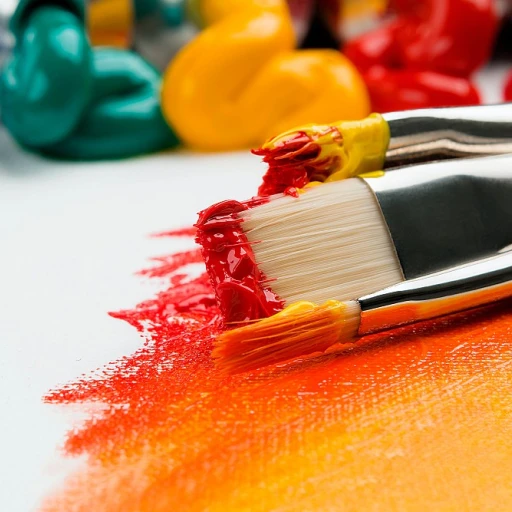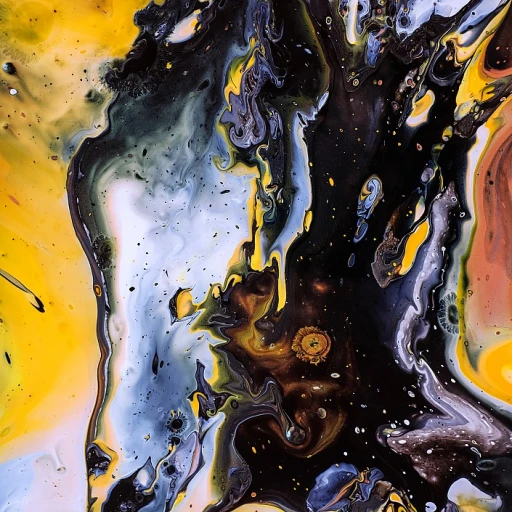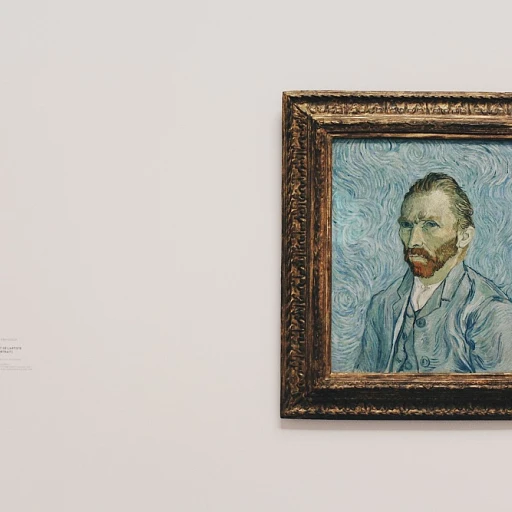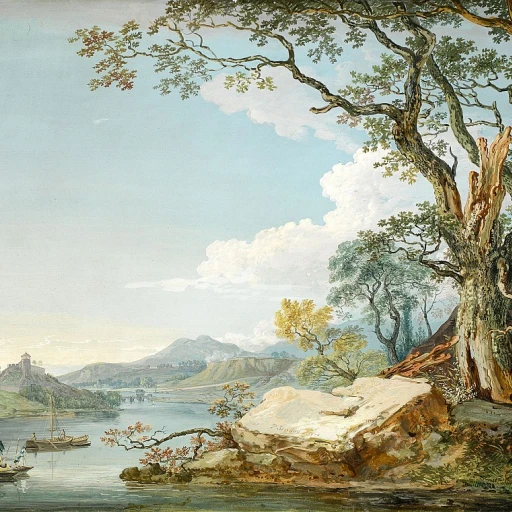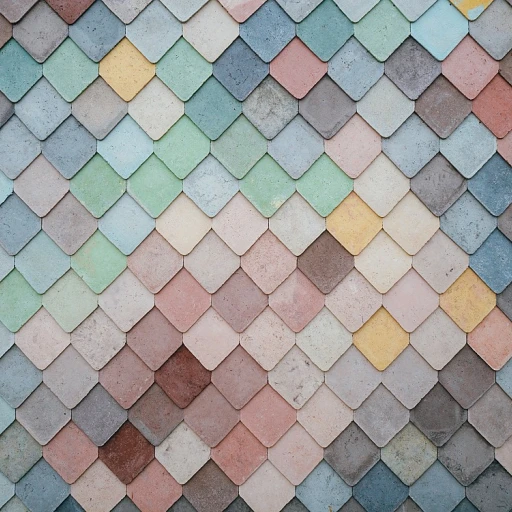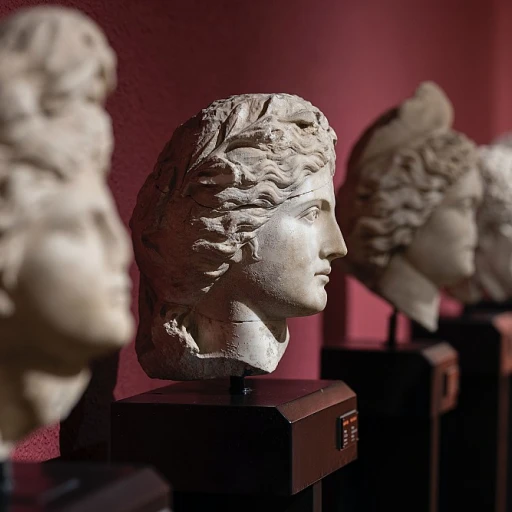-teaser.webp)
The Unique Appeal of Watercolor in Luxury Art
The Captivating Essence of Watercolor
Watercolor holds a unique position in the realm of luxury art, distinguishing itself with its elegant simplicity and ethereal transparency. One cannot resist the captivating interplay of water and pigment that transforms regular paintings into mesmerizing vistas. This medium, often perceived as delicate, gracefully balances between intricacy and fluidity, making each original watercolor a singular work of art. Let's consider why watercolor paintings evoke such reverence among collectors and enthusiasts alike:- Subtle Complexity: The medium demands a deft hand and an astute eye. Unlike traditional oil painting, where an artist may layer and adjust, watercolor necessitates precision and forethought, as corrections can be nearly impossible.
- Light Interaction: Watercolors shine through their interaction with light. The glistening transparency of paint against watercolor paper results in a luminous quality that few other mediums can rival.
- Exclusivity of Originals: Fine art collectors understand the allure of owning an original painting. Each piece carries the hand-signed touch of its creator, which stands in stark contrast to mass-produced reproductions.
- Versatility and Technique: Artists employ various techniques, from wet-on-wet compositions to dry brush methods, each offering a unique texture and style. The technique chosen by the artist often enhances the allure and price of watercolor paintings.
- Framing and Presentation: Framed ready for display, the framing choice further accentuates the painting's elegance, ensuring that the art piece not only tells a story but also seamlessly integrates into the sophisticated aesthetic of a luxury collection.
Historical Significance and Evolution
The Historical Journey of Watercolor in Fine Art
Watercolor paintings have a storied past, rich with historical significance. This delicate medium has been embraced through time for its unique ability to convey a sense of spontaneity and transparency in art, offering a gentle touch of elegance. Its role as a key player in the luxury art world is undeniably tied to this historical evolution. Initially used by ancient cultures for decorative and illustrative purposes, watercolor began finding its footing as a refine art form in the late European medieval period. Artists employed this medium on watercolor paper and vellum alike, transforming it into a sought-after style among collectors. As we trace the history, the Renaissance brought forth a flourishing appreciation for this medium watercolor—a testament to its versatility and allure. With elements of both precision and fluidity, these paintings transcended regular art constraints, often seen as the hallmark of originality and creativity. Fast forward to the 19th and 20th centuries, the works of artists who mastered this medium further solidified its prominence within the luxury art sphere. They explored its potential, creating fine art pieces that challenged traditional perceptions and elevated its status in the market. Currently, watercolor originals continue to be revered, not just for their historic appeal, but also for their intricate techniques and the mastery required to handle the medium delicately. For a deeper exploration into these artistic techniques and how they've evolved in contemporary art, our readers can investigate the sophistication of still life watercolor artistry. Understanding the historical significance combined with these refined techniques can enhance one's appreciation for the persistent allure of original watercolors, ultimately serving as a foundation for sophisticated curation and investment in this luxury art form.Techniques and Challenges
The Art and Complexity of Watercolor Techniques
Watercolor painting, known for its unique translucent qualities, presents both opportunities and challenges for artists. Unlike mediums such as oil or acrylic, watercolors require a rapid yet deliberate approach. The artist has limited time to manipulate the paint before it dries, making each brushstroke crucial. One significant challenge is mastering the fluidity of watercolor. The medium's tendency to spread unpredictably on watercolor paper requires artists to develop a controlled technique. This skill can elevate watercolor artwork from regular paintings to original fine art pieces that are valued highly by collectors. Moreover, the choice of materials plays a critical role in the final image. High-quality arches watercolor paper, known for its durability and texture, can make a substantial difference in how the paint appears and lasts over time. This adds to the artwork's framed ready appeal, especially when displayed alongside other luxury pieces. Watercolor paintings also offer a rich history of techniques that invite experimentation. From delicate washes to intricate details, artists explore a range of methods to bring their original paintings to life. This exploration of techniques often results in unique effects that can significantly influence the painting's final look and its price on sale. In essence, the techniques used in watercolor art contribute not only to the aesthetic complexity but also to the art's value as a luxury item. Aspiring collectors can appreciate the nuanced techniques that set original watercolor paintings apart from reproductions, making them a worthwhile investment in the world of fine art. For those looking to add elegance to their art collection, understanding these techniques is vital to making informed decisions about their acquisitions.Valuation and Investment Potential
Valuation Dynamics and Investment Potential
In the realm of fine art, the allure of investing in original watercolor paintings is often underscored by several compelling factors. These artworks, distinctly marked by their medium, offer unique attributes that contribute to their valuation and desirability as long-term investments. One of the foremost elements influencing the price of watercolor art is its originality. An original watercolor painting stands out not just for its nuanced execution on watercolor paper but also for its intrinsic artistic value. Unlike reproductions, these pieces bear the hallmark of the artist's direct hand, sometimes further authenticated by a hand-signed detail. Art lovers often find added charm in framed renditions, where a painting's dimensions—be it an expansive seascape or a more intimate still life—may be presented in their curated glory. When considering investment potential, it's essential to recognize the historical appreciation of certain artists' works. The reputation and recognition of artists who consistently produce breathtaking watercolor originals play a significant role in determining the regular price and sale value of their paintings. As with all fine art, provenance and the historical significance of a piece can significantly impact its appraisal. Moreover, the market for original fine watercolors can fluctuate with trends and collector interest. Smaller sizes can be compared to larger statement pieces, where each unique piece, whether an intimate image or a full-scale depiction, holds its own potential for price sold. Collectors also evaluate the reproducibility of these paintings; since water-based media can sometimes be challenging to replicate, having an original that cannot be easily reproduced adds a layer of exclusivity, further driving investment appeal. However, as with any art acquisition, understanding the nuances of the piece and the artist behind it is crucial. For those looking to add to their cart a piece imbued with history and aesthetic prowess, the art of watercolor paints an engaging picture of elegance and sophistication, promising potential growth in both appreciation and financial terms. Ultimately, for those nurturing a luxury collection, these original watercolor paintings not only symbolize the zenith of artistic endeavor but also represent a calculated, thoughtful investment.Curating a Luxury Collection
Building a Collection of Distinction
Curating a luxury collection of original watercolor paintings requires a discerning eye and a deep appreciation for the medium's unique qualities. Watercolor art, with its delicate hues and fluid forms, offers a distinct charm that sets it apart from other art forms. When selecting pieces for a collection, consider the following aspects to ensure your collection stands out:
- Authenticity: Prioritize original watercolor paintings over reproductions. An original painting, especially one that is hand signed by the artist, holds greater value and authenticity. Look for pieces that are not only visually striking but also come with a certificate of authenticity.
- Artist Reputation: Research the artists whose works you are considering. Established artists with a track record of exhibitions and sales often have paintings that appreciate in value. However, emerging artists can also offer unique perspectives and potential investment opportunities.
- Quality and Condition: Examine the quality of the watercolor paper and the condition of the painting. Arches watercolor paper is renowned for its durability and quality, making it a preferred choice for many artists. Ensure the painting is free from damage and is framed ready for display.
- Size and Display: Consider the size of the painting and how it will fit into your existing collection or space. Whether it's a small, intimate piece or a large, commanding image, the size should complement your collection's overall aesthetic.
- Investment Potential: While the emotional and aesthetic appeal of a painting is paramount, its investment potential should not be overlooked. Original fine art, especially watercolor originals, can appreciate over time, making them a wise addition to any luxury collection.
By focusing on these elements, collectors can build a collection that not only reflects their personal taste but also stands as a testament to the timeless allure of watercolor art. As you curate your collection, remember that each piece is a unique expression of the artist's vision, captured in the fluid medium of watercolor.
Preservation and Care
Ensuring Longevity and Beauty
Preserving the allure of original watercolor paintings requires a meticulous approach, given the medium's sensitivity. Unlike oil paintings, watercolors are more vulnerable to environmental factors, necessitating careful handling and display. The paper, often Arches watercolor paper, is prone to deterioration if not properly cared for.
Optimal Display Conditions
When displaying your watercolor art, consider framing it with UV-protective glass. This helps shield the painting from harmful light exposure, which can cause fading over time. A well-framed ready piece not only enhances the visual appeal but also adds a layer of protection. Ensure that the painting is not hung in direct sunlight or in areas with high humidity, as these conditions can compromise the integrity of the paper and the vibrancy of the colors.
Regular Maintenance and Care
Regular maintenance is crucial for preserving the fine art quality of your collection. Dust the framed pieces gently with a soft cloth to avoid scratching the glass or damaging the frame. For original watercolor paintings, it’s advisable to have them checked periodically by a professional conservator, especially if they are hand signed and hold significant value.
Storage Solutions
For those not currently on display, store your watercolor originals in a cool, dry place. Use acid-free materials to prevent any chemical reactions that could damage the paintings. If you have a collection of varying sizes, ensure that each piece is stored flat and not stacked, to avoid any pressure marks or warping.
Investment in Preservation
Investing in the preservation of your watercolor paintings is as important as the initial purchase. The price sold for these artworks can appreciate significantly if they are well-maintained. By taking these steps, you not only protect your investment but also ensure that the beauty of these original paintings continues to captivate for generations.


